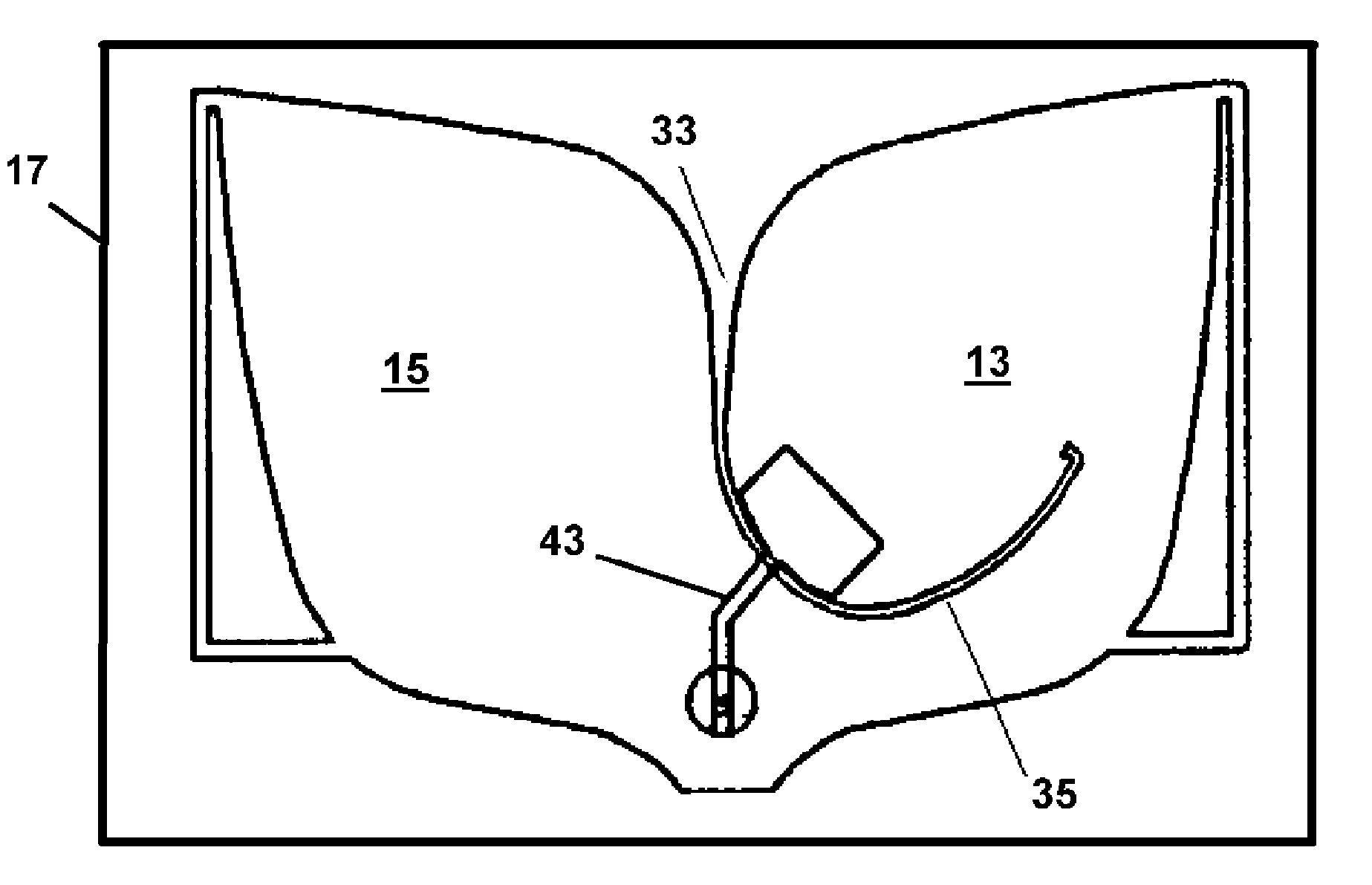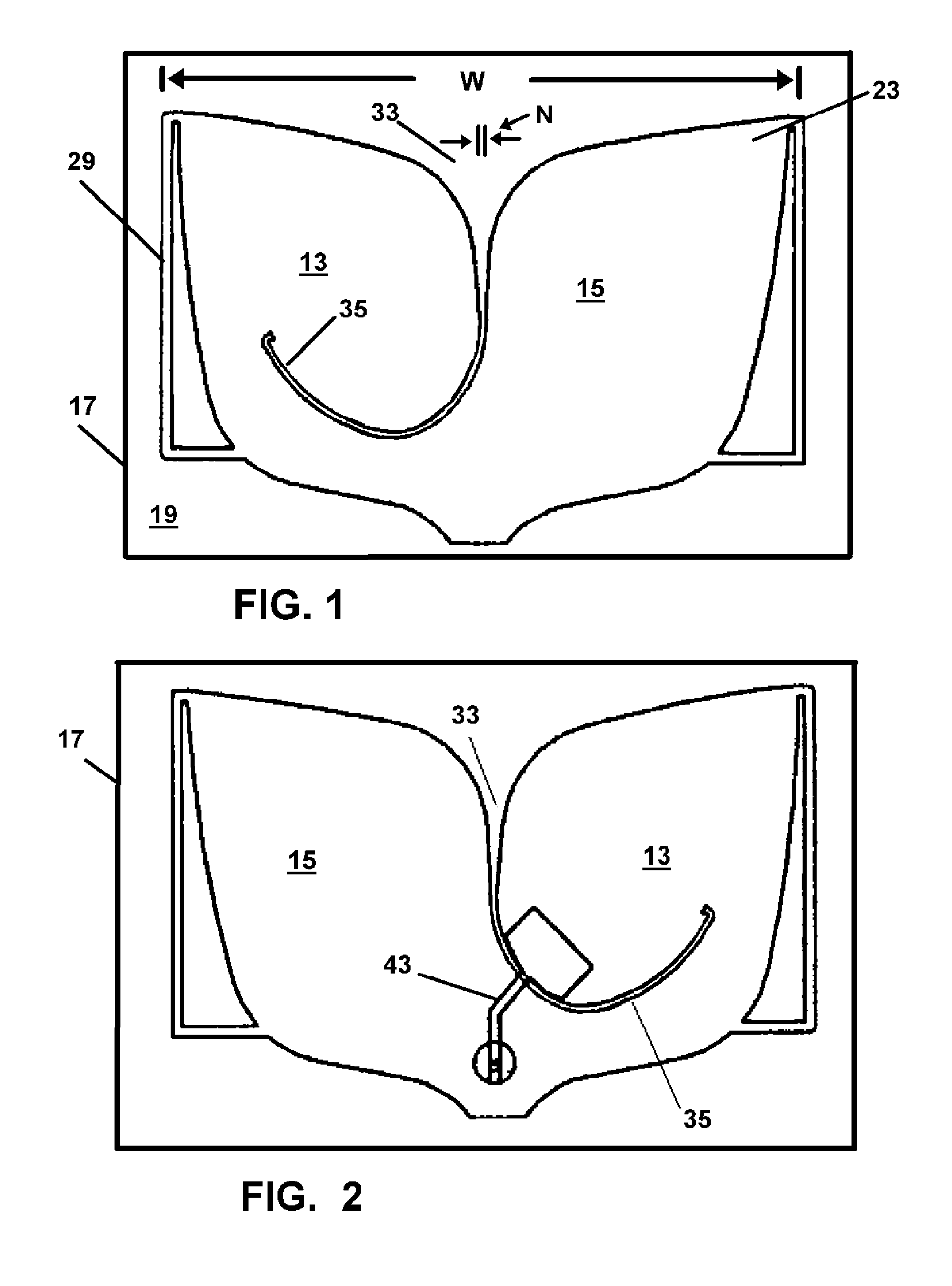Wideband high gain antenna
a high-gain, wideband technology, applied in the direction of slot antennas, antenna details, antennas, etc., can solve the problems of insufficient timing of the plurality of incoming signals, insufficient electrical connection of the plurality of radiator elements within the tower, and insufficient electrical impedance accounting. , to achieve the effect of excellent transmission and reception capability
- Summary
- Abstract
- Description
- Claims
- Application Information
AI Technical Summary
Benefits of technology
Problems solved by technology
Method used
Image
Examples
Embodiment Construction
[0087]Referring now to the drawings of FIGS. 1-13, in FIGS. 1 and 2, depicting the radiator element 22 of the device 10, the radiator element 22 shaped much like a “whale tail” is depicted having two halves which are formed by a first horn 13 and second horn 15 looking much like leaves and being substantially identical or mirror images of each other. Each radiator element 22 of the invention is formed on a substrate 17 which as noted is non conductive and may be constructed of either a rigid or flexible material such as, MYLAR, fiberglass, REXLITE, polystyrene, polyamide, TEFLON fiberglass, or any other such material which would be suitable for the purpose intended.
[0088]A first surface 19 is coated with a conductive material by microstripline or the like or other metal and substrate construction well known in this art. Any means for affixing the conductive material to the substrate is acceptable to practice this invention. The conductive material 23 as for example, include but are ...
PUM
 Login to View More
Login to View More Abstract
Description
Claims
Application Information
 Login to View More
Login to View More - R&D
- Intellectual Property
- Life Sciences
- Materials
- Tech Scout
- Unparalleled Data Quality
- Higher Quality Content
- 60% Fewer Hallucinations
Browse by: Latest US Patents, China's latest patents, Technical Efficacy Thesaurus, Application Domain, Technology Topic, Popular Technical Reports.
© 2025 PatSnap. All rights reserved.Legal|Privacy policy|Modern Slavery Act Transparency Statement|Sitemap|About US| Contact US: help@patsnap.com



